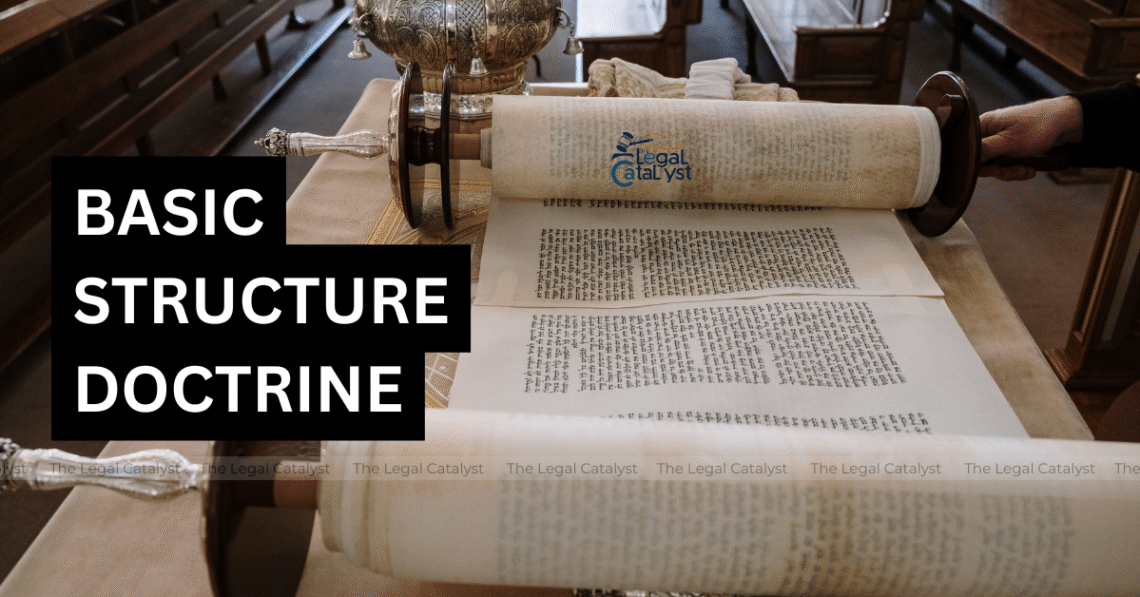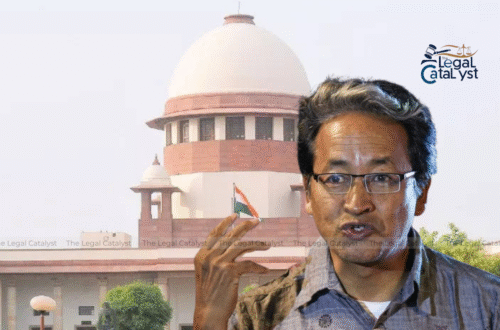Introduction
The Indian Constitution, adopted in 1950, is widely regarded as one of the most comprehensive and forward-looking constitutions in the world. It balances the ideals of liberty, equality, and fraternity while accommodating India’s diversity. Over the decades, it has faced constant amendments, political pressures, and social changes. Yet, it has endured. The reason for this endurance lies not only in the text itself but in the way the judiciary has interpreted and preserved its spirit. Among the many doctrines developed by Indian courts, the Basic Structure Doctrine stands out as a uniquely Indian contribution to constitutional jurisprudence. This doctrine ensures that no authority, not even Parliament, can alter the essential character of the Constitution.
Historical Background and Emergence
The Basic Structure Doctrine emerged from the landmark case of Kesavananda Bharati v. State of Kerala (1973). The case was triggered by a challenge to land reform laws and the extent of Parliament’s power to amend the Constitution. A 13-judge bench of the Supreme Court, the largest ever in Indian judicial history, delivered a deeply divided verdict. By a narrow margin of 7–6, the Court held that while Parliament possesses wide powers to amend the Constitution under Article 368, it cannot alter or destroy its basic structure or essential features.
This judgment was revolutionary because it placed substantive limits on parliamentary sovereignty. It struck a careful balance: Parliament could amend the Constitution to meet changing needs, but it could not tamper with its fundamental identity. Thus, the Court created a safeguard against authoritarian excesses.
Also Read- Rule of Law Prevails Because of Independent Judiciary, Justice BV Nagarathna
What Constitutes the Basic Structure?
One of the most interesting aspects of this doctrine is that the Supreme Court did not provide an exhaustive definition of the term “basic structure.” Instead, it left the concept open-ended, allowing it to evolve over time through case law. Over the years, the Court has identified several principles and features as forming part of the basic structure.
These include:
- The supremacy of the Constitution
- The rule of law
- The principle of separation of powers
- Judicial review
- Federalism and the distribution of powers between the Union and States
- Secularism
- The democratic form of government and free and fair elections
- Independence of the judiciary
- Fundamental rights and their essential nature
- The balance between Fundamental Rights and Directive Principles of State Policy
This open-ended nature allows the doctrine to adapt to future challenges and ensures that the core values of the Constitution are preserved across changing times.
Judicial Developments Post-Kesavananda
The Kesavananda Bharati decision was not the end of the story. Subsequent cases refined and expanded the scope of the doctrine.
In Indira Nehru Gandhi v. Raj Narain (1975), the Court struck down a constitutional amendment that sought to immunize the Prime Minister’s election from judicial review. The Court held that judicial review is part of the basic structure, and therefore beyond Parliament’s amending power.
In Minerva Mills v. Union of India (1980), the Supreme Court reaffirmed that the harmony and balance between Fundamental Rights and Directive Principles of State Policy form part of the basic structure. The judgment emphasized that Parliament’s power to amend the Constitution is limited, and unlimited power itself would be unconstitutional.
In S.R. Bommai v. Union of India (1994), the Court ruled that secularism is part of the basic structure. This case also clarified the scope of judicial review in the dismissal of state governments under Article 356.
More recently, in the NJAC Case (2015), the Court struck down the National Judicial Appointments Commission Act, holding that judicial independence and the primacy of the judiciary in appointments are part of the basic structure. This decision reaffirmed that the doctrine continues to be a powerful tool in preserving constitutional identity even in contemporary times.
Also Read- Media Trials in India: Freedom of Press or a Threat to Fair Trial?
Why Is the Doctrine Unique?
The Basic Structure Doctrine is considered India’s unique contribution to global constitutional law. Unlike in countries such as the United Kingdom, where Parliament is sovereign, India’s judiciary declared that the Constitution, not Parliament, is supreme. This ensures that constitutional values remain intact even when faced with temporary political majorities.
The doctrine also acts as a safeguard against authoritarian tendencies. During the Emergency (1975–1977), when democratic institutions were under great strain, the doctrine served as a judicial shield to protect constitutionalism. It guarantees that no government can rewrite the Constitution to suit its convenience.
What makes it truly unique is that it is not expressly written into the Constitution. It was created by the judiciary as a response to political developments, making it a prime example of judicial creativity and innovation in constitutional law.
Criticisms of the Doctrine
While widely celebrated, the Basic Structure Doctrine is not without its critics. Many argue that it gives unelected judges the power to strike down constitutional amendments passed by the elected representatives of the people. This, they argue, undermines democratic will.
Another criticism is that the doctrine is vague and indeterminate. Since the Supreme Court has not provided a closed list of what constitutes the basic structure, the determination often depends on the subjective understanding of judges. This can lead to uncertainty in constitutional law.
Moreover, some scholars argue that since the doctrine has no explicit textual basis in the Constitution, it represents a form of judicial overreach. However, defenders of the doctrine argue that its legitimacy comes from the need to protect democracy and constitutional morality itself.
Also Read- Backlog of Judicial Cases in India: A Looming Crisis Demanding Urgent Action
Conclusion
The Basic Structure Doctrine is often described as India’s “constitutional safety valve.” It prevents Parliament from undermining the very ideals that give the Constitution its legitimacy. By ensuring that fundamental features like democracy, secularism, judicial independence, and the rule of law cannot be destroyed, the doctrine preserves the spirit of the Constitution against short-term political interests.
Despite criticisms, the doctrine has proven to be an effective shield against authoritarianism and arbitrary use of power. It is widely studied and admired across the world as an example of how a constitutional democracy can protect itself through judicial innovation. In many ways, it reflects the foresight of India’s framers, who designed a Constitution that could grow with time yet remain anchored in core values.
Ultimately, the Basic Structure Doctrine symbolizes the delicate balance between change and continuity. It ensures that while the Constitution may evolve through amendments, its soul remains untouched. This doctrine is India’s unique gift to constitutional law and a testament to the resilience of its democratic framework.
Connect with us on Instagram – X – LinkedIn for daily updates, quizzes, and other materials








